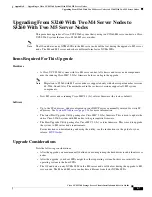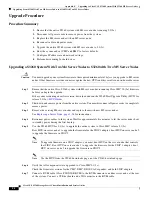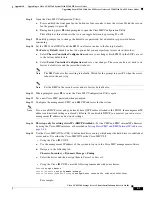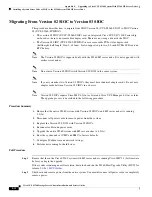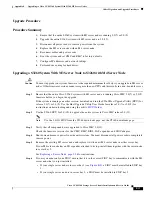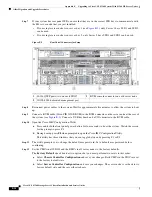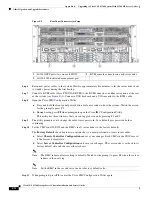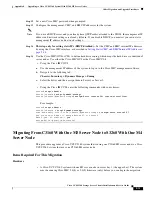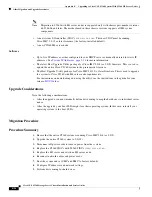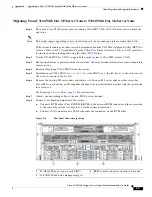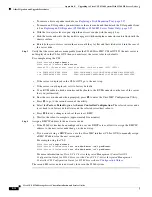
E-19
Cisco UCS S3260 Storage Server Chassis Installation and Service Guide
Appendix E Upgrading to Cisco UCS S3260 System With S3260 M5 Server Nodes
Older Migration and Upgrade Procedures
Upgrade Procedure
Procedure Summary
1.
Ensure that the entire S3260 system with M3 server node is running 2.0(7) or 2.0(9).
2.
Upgrade the entire S3260 system with M3 server node to 2.0(13).
3.
Disconnect all power cords to remove power from the system.
4.
Replace the M3 server node with an M4 server node.
5.
Reconnect cables and power cords.
6.
Boot the system and set CMC and BMC to factory defaults.
7.
Configure IP addresses and network settings.
8.
Perform drive zoning for hard drives.
Upgrading a S3260 System With M3 Server Node to S3260 with M4 Server Node
Caution
You must upgrade your system firmware to the required minimum level
before
you upgrade to M4 server
nodes. Older firmware versions cannot recognize the new CPUs and this results in a non-bootable server.
Step 1
Ensure that the entire Cisco S3260 system with M3 server node is running Cisco IMC 2.0(7) or 2.0(9)
firmware before you begin the upgrade.
If the system is running an earlier version, download and run the S3260 Host Upgrade Utility (HUU) for
release 2.0(7) or 2.0(9). Use the Host Upgrade Utility User Guide for release 2.0(7) or 2.0(9) for
instructions on downloading and using the utility:
Step 2
Use the S3260 HUU for 2.0(13) to upgrade the entire system to Cisco IMC release 2.0(13).
Note
Use the 2.0(13) HUU from the S3260 downloads page, not the C3160 downloads page.
Step 3
Verify that all components were upgraded to Cisco IMC 2.0(13).
Check the firmware versions for the CMC, BMC, BIOS, SAS expander, and SIOC adapter.
Step 4
Shut down and remove power from the entire system. You must disconnect all power cords to completely
remove power.
Step 5
Remove the existing M3 server node and replace it with a new M4 server node in either server bay.
If your M4 server node has an I/O expander attached to its top, install them together with the server node
in server bay 2.
See
Replacing a Server Node, page 3-26
for instructions.
Step 6
If your system has only one SIOC, ensure that it is in the correct SIOC bay to communicate with the M4
server node that you just installed:
•
If your single server node is in server bay 1 (see
), a SIOC must be installed in SIOC bay
1.
•
If your single server node is in server bay 2, a SIOC must be installed in SIOC bay 2.



